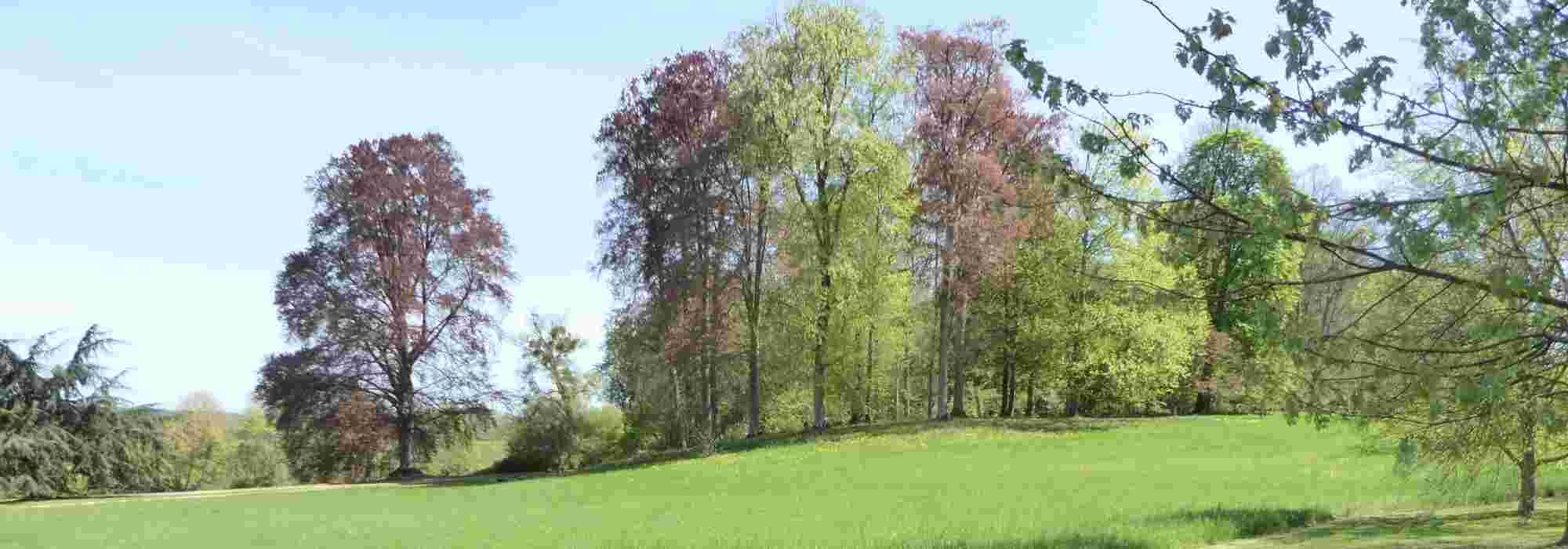
Creating a woodland garden
Choosing the location, the essential oils, and the right actions
Contents
Thickets are small groupings of trees or bushes that structure the landscape of our countryside amidst large agricultural monocultures. They can also find their place in adequately sized gardens, providing relief, verticality, ecosystem services, and a habitat for a multitude of wildlife. Discover when and how to design one, as well as the most beautiful species associations to create a thicket that is both aesthetic and useful.
What is a grove?
According to the definition, groves are small groups of trees of at least 5 ares created artificially by humans for various activities (hunting, leisure, protection against the elements,…) or the last remnants of an exploited ancient forest.
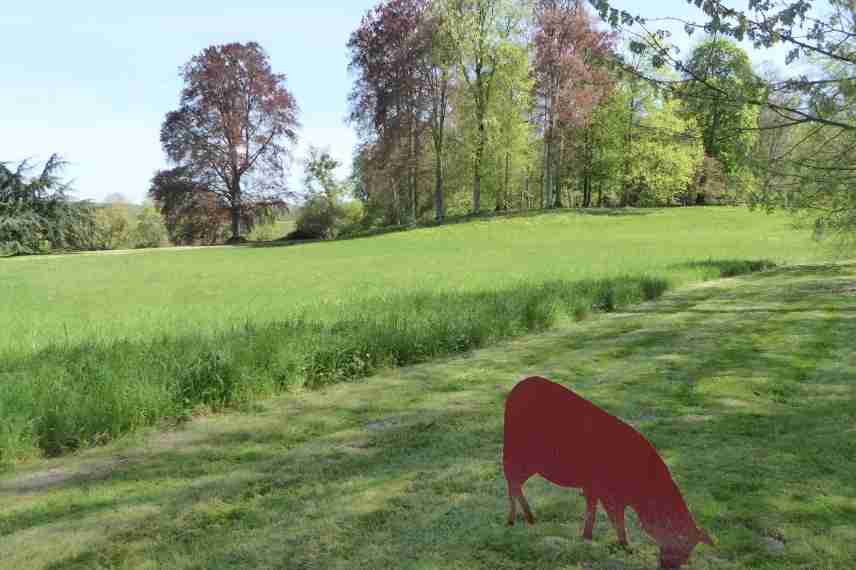
A grove of trees at Château du Lude in Sarthe (© Gwenaëlle David)
Read also
7 trees for a windbreakWhy plant a grove?
Trees have been around for hundreds of millions of years and have contributed to the creation of the soils on which we grow our food. They purify the air, water, and land, produce shade, oxygen, and organic fertilising matter, beautify our landscapes, and improve our mental health… In short, they are essential for our survival!
The functions of the copse will be multiple:
- Cutting strong winds during storms
- Welcoming local wildlife by providing shelter and food
- Hiding from direct views of your immediate neighbours
- Integrating your garden into the surrounding landscape
- Creating a cooler atmosphere in your garden during heatwaves (you will actively help combat climate warming)
- Utilising resources such as fruits and wood from certain trees, as well as the organic matter they provide to enrich the rest of your garden
- Giving an aesthetic and rustic appearance with this touch of verticality in the garden. The barks and different shapes of tree species will make your garden attractive in every season
So, as you can see, the benefits are numerous and valuable.
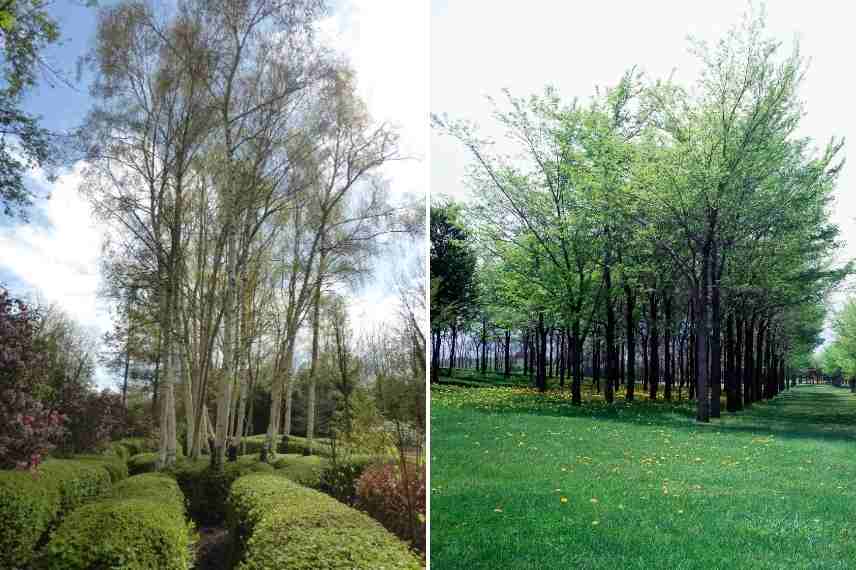 Landscaped copse composed of birches at the Jardin du Petit Bordeaux (72) © Gwenaëlle David, and a more formal and geometric copse on the right
Landscaped copse composed of birches at the Jardin du Petit Bordeaux (72) © Gwenaëlle David, and a more formal and geometric copse on the right
Discover other Shrubs
View all →Available in 1 sizes
Available in 1 sizes
Available in 1 sizes
Available in 1 sizes
Available in 1 sizes
Available in 1 sizes
Available in 1 sizes
Available in 1 sizes
Available in 1 sizes
Available in 1 sizes
Think carefully about the location.
First and foremost, careful consideration must be given to its location to avoid potential neighbourly conflicts or proximity to your home. Shade, falling branches, or roots can pose problems during their growth. Therefore, it is essential to observe the legal distances in relation to your neighbours, as well as to “project” yourself into the future by anticipating the final size of your trees.
Most often, a grove will be placed at the back of your property and at least 20 metres from your home. Do not forget to maintain a minimum distance of 2 m from the boundary line when your plants exceed a height of 2 m.
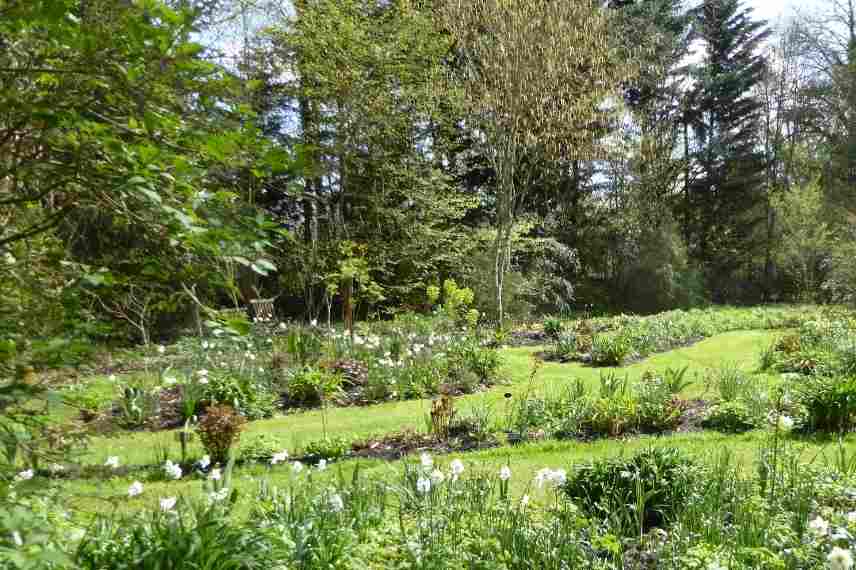
Grove at the back of the garden (© Gwenaëlle David)
Read also
How and why to create a windbreak hedge?In what form should you introduce your trees?
There are several methods of creation that will depend on your available space, patience, and budget. Planting large trees directly may seem like a good idea to save time, but the establishment of your plants will be more complicated, and the initial cost will be very high.
After defining your allocated area for your grove, we will decide how the trees will be planted (bare roots, root balls, seeds, or in containers).
Methods for Creating a Grove
-
Planting Your Trees as Bare Roots
Carried out from October to March, the planting of bare root plants is quite inexpensive and ensures excellent establishment of the chosen plants while saving time.
-
Planting Large Specimens with Root Balls
This method is relatively costly and requires heavy machinery and professionals. The cost of some mature trees can exceed a thousand euros. However, it has the advantage of providing an immediate grove appearance, although the trees will need time to establish well.
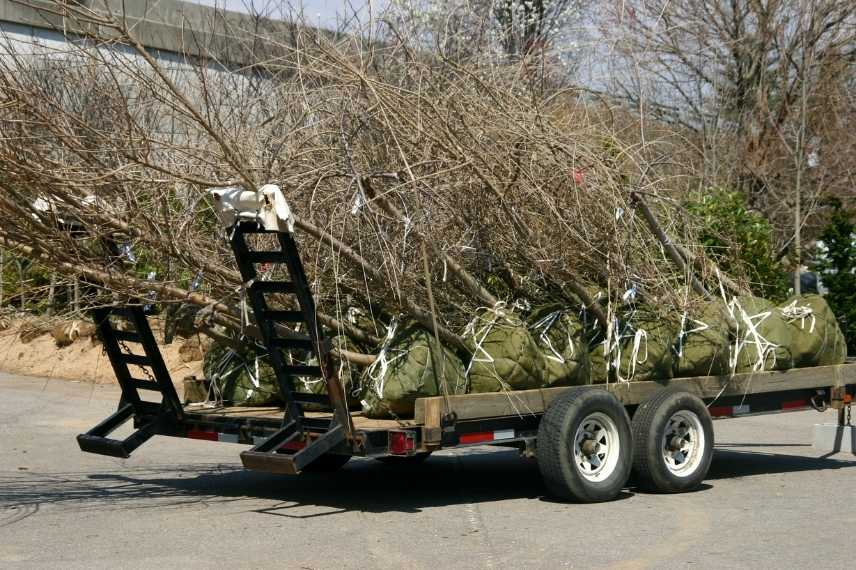 Transplanting large specimens requires specific equipment
Transplanting large specimens requires specific equipment
-
The “Let It Be” Method
In nature, when a meadow or short grass meadow is left unattended, it will inevitably be colonised by woody plants. After 3 to 4 years, willows (Salix), hawthorns (Crataegus), birches (Betula), oaks (Quercus), and other maples (Acer) will quickly colonise your wild circle. This method is obviously longer and more unpredictable in its final form but has the advantage of costing you nothing and providing trees suited to your climate and soil. You can accelerate the process by “sowing” your grove with various seeds collected from the forest: acorns, beech-nuts, chestnuts, samaras, berries… Simply scatter these seeds in your area and wait. Birds play a significant role if you choose this method: attract them with feeders or perches that will encourage them to visit your future grove and “deposit” your future trees naturally (via their droppings).
Well install your young plants
The most important thing is to respect the planting distances between each species and to anticipate the growth rates of the species.
Do not be afraid to space your plants several metres apart from the start. For tall trees, a minimum spacing of 5 to 6 metres should be maintained. This may seem excessive and unattractive at first, but it will make perfect sense over the years.
François’s advice: Also ensure to place fast-growing species (which can easily reach 20 metres high or more) such as birches, willows, poplars, sycamore maples, and false acacias to the north of the grove. This will prevent competition and the decline of various slower-growing subjects (oak, beech, rowans…).
Make sure to research the habits and requirements of each tree species you wish to plant. Some species do not tolerate competition and need plenty of space to thrive. Also ensure to adapt the trees to the type of soil and climate you have. For example: In calcareous soil, avoid introducing trees like the chestnut, which does not like limestone!
Some trees of the same species tolerate the form of a coppice (a tree with several trunks originating from the same stump) or a false coppice (planting trees in the same planting hole). These will grow side by side and create a magnificent effect in your grove. Birches are particularly recommended for this type of form, which will highlight their stunning bark.
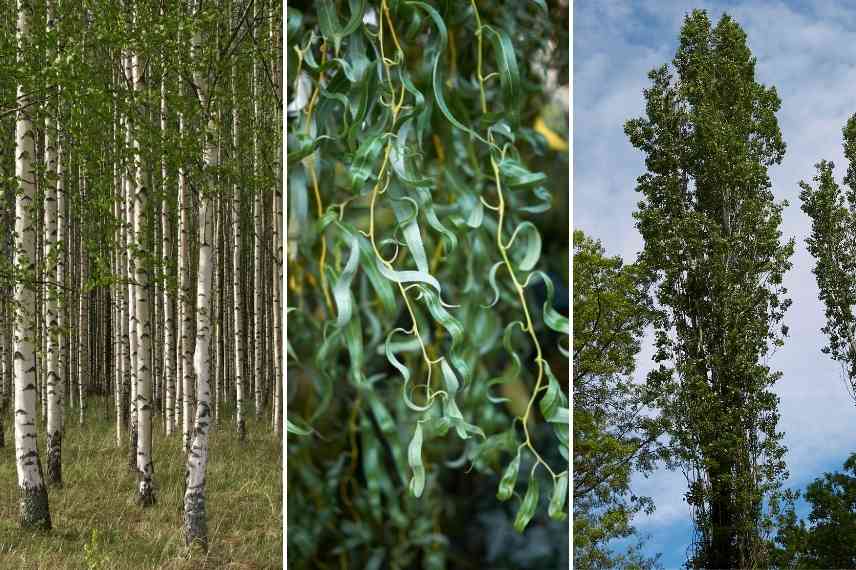
Birches, Salix ‘Alba’, Populus ‘Nigra’
Create a woodland atmosphere in your grove.
To help your trees establish themselves perfectly and nourish them effectively, we will conclude with two very important operations:
Create a forest litter layer
This layer of organic matter scents the undergrowth during our walks. It consists of twigs, leaves, and decomposing wood that nourish the trees through humus. Mimicking this type of natural composting at the base of your trees will help them develop quickly, particularly in combating drought. To do this, you should layer a maximum of decomposed materials in the correct order: from the most decomposed to the freshest, just like in nature. Ideally, you will spread a first layer of partially decomposed wood chips (or ramial chipped wood) over the old short grass meadow and around the trees. You can then add a second layer of leaves from the previous autumn, for example. The total thickness should be between 10 and 20 cm. This way, you mimic the life cycle of the soil and trees in a natural grove.
Plant shrubs between the trees
This operation is not obligatory but allows for quick densification of the grove and creates a more forest-like atmosphere. Moreover, shrubs and trees support each other nutritionally by exchanging mineral elements through the fungi present at their roots. The shrubs (planted as bare roots) will be placed randomly, one metre apart from each other. Be sure to diversify the species as much as possible to achieve the most natural effect. Among our favourites are: the mountain ash, the hazel (particularly suited to the undergrowth), the wild cherry, hawthorns, privets, blood dogwoods or Cornus mas, the elder, etc.
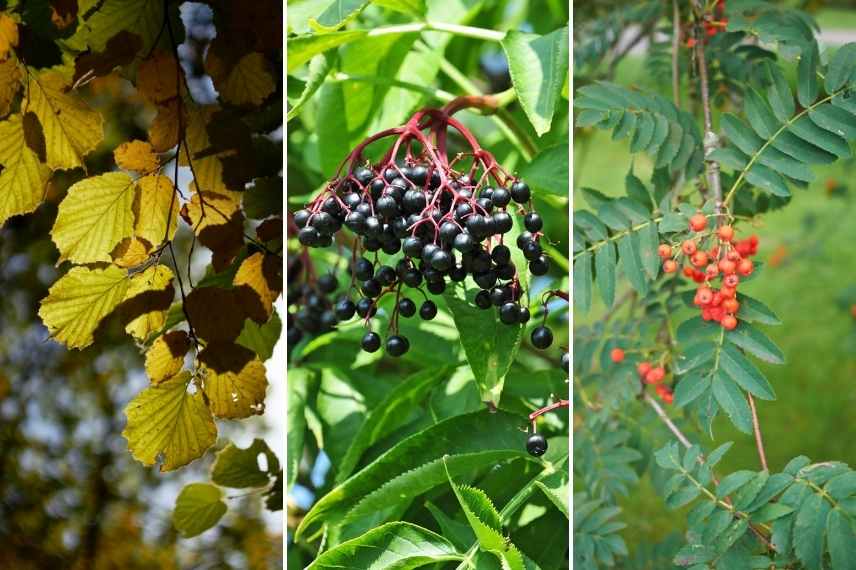
Create an intermediate layer to enhance a forest atmosphere: for example, with Hazel, Elder, and Mountain Ash
- Subscribe!
- Contents
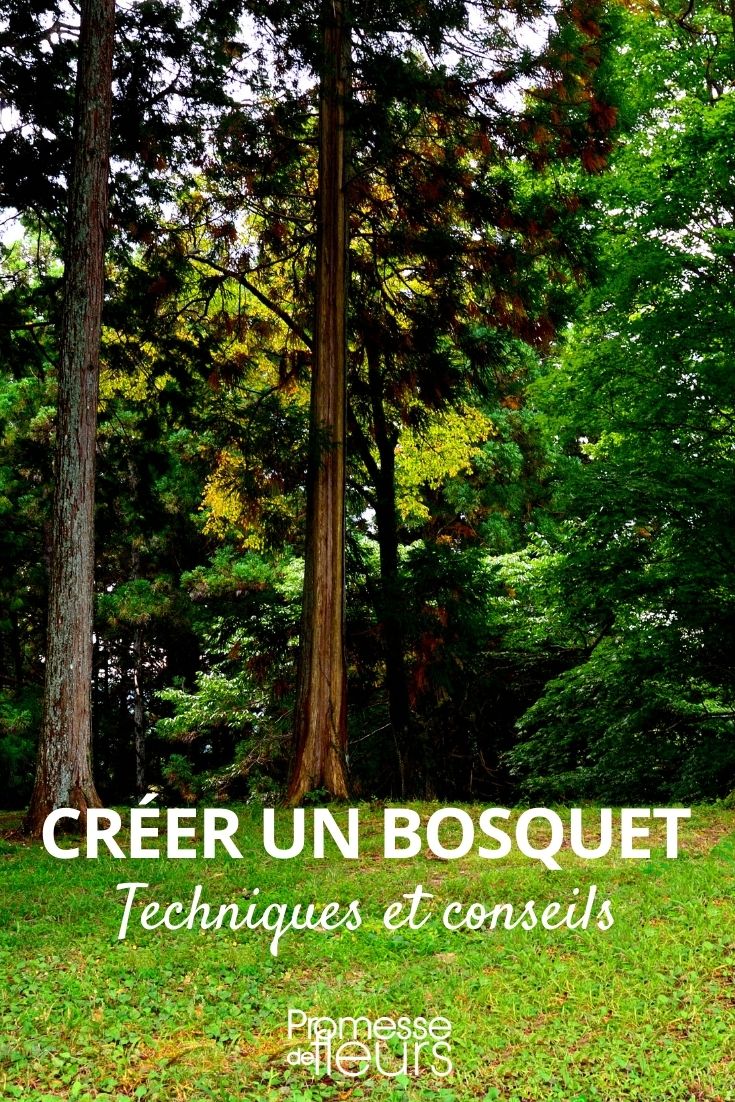































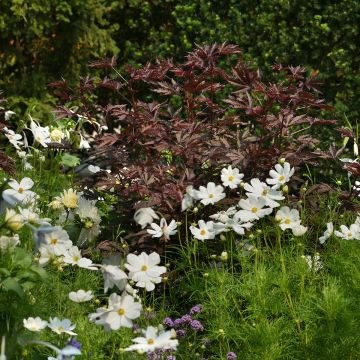
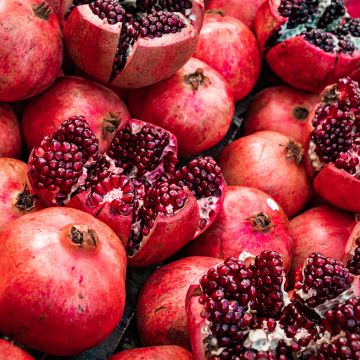
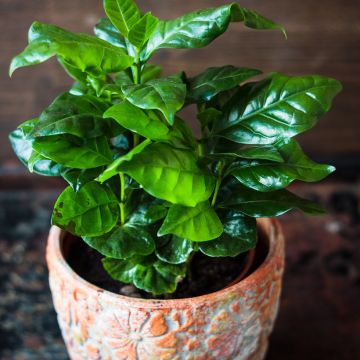
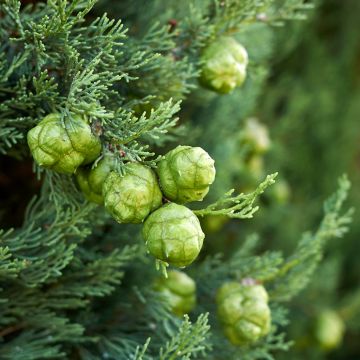
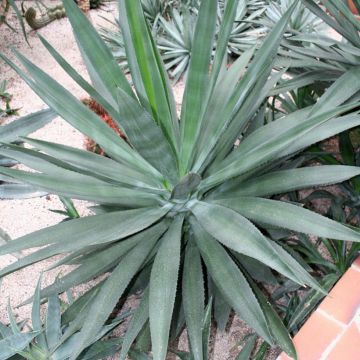
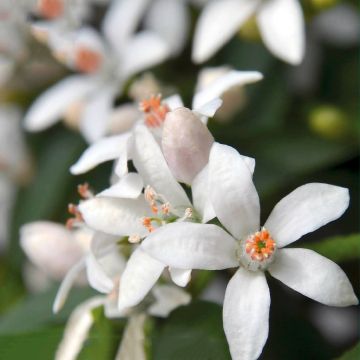
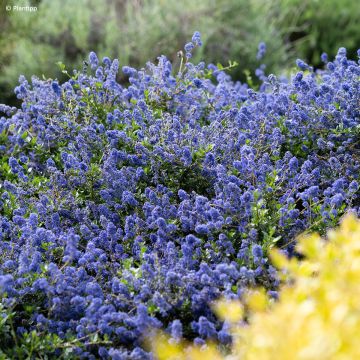
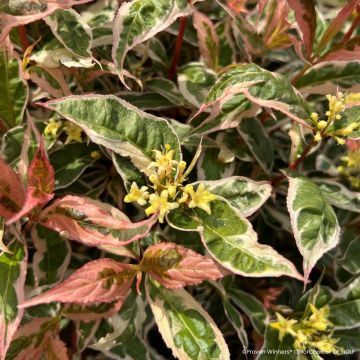
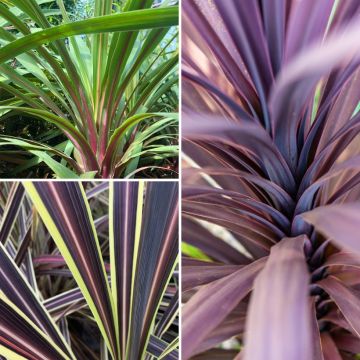
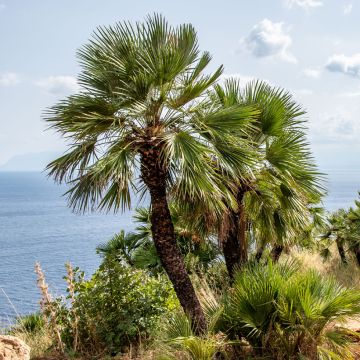
Comments